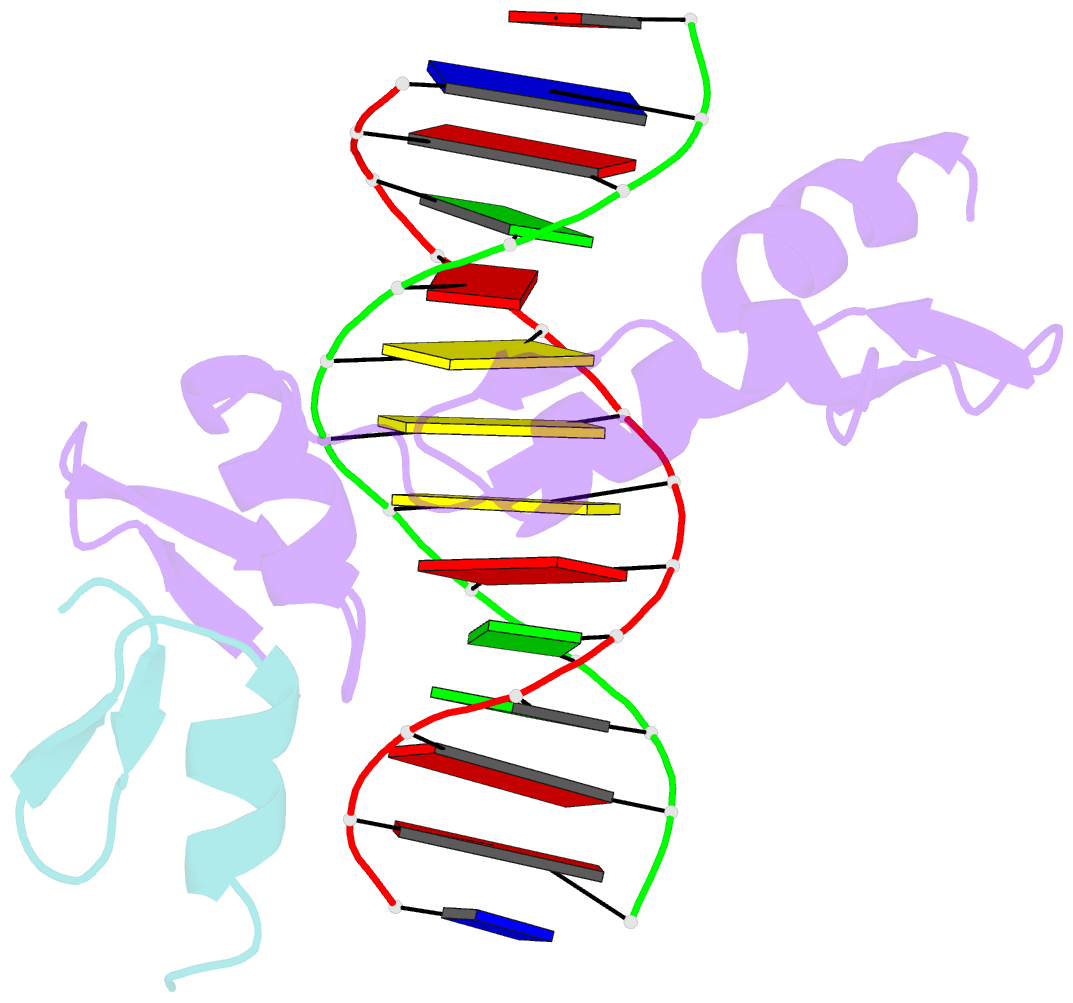Summary information and primary citation
- PDB-id
- 8h9h; SNAP-derived features in text and JSON formats;
DNAproDB
- Class
- DNA binding protein
- Method
- X-ray (2.2 Å)
- Summary
- Crystal structure of zbtb7a in complex with gaccc-containing sequence
- Reference
- Yang Y, Xiao L, Xue Y, Idris MO, Liu J, Pei D, Shi Y, Liao B, Li F (2023): "ZBTB7A regulates primed-to-naive transition of pluripotent stem cells via recognition of the PNT-associated sequence by zinc fingers 1-2 and recognition of gamma-globin -200 gene element by zinc fingers 1-4." Febs J., 290, 3896-3909. doi: 10.1111/febs.16789.
- Abstract
- ZBTB7A, a transcription factor containing a tandem array of four Cys2-His2 zinc fingers (ZFs), is vital for multiple physiological events through directional binding to different genomic loci. Our previously determined crystal structure of ZBTB7A in complex with a GCCCCTTCCCC sequence revealed that all four ZFs (ZF1-4) are involved in binding to γ-globin -200 gene element to repress fetal haemoglobin expression. Recently, it has been reported that ZBTB7A drives primed-to-naïve transition (PNT) of pluripotent stem cells through binding to a 12-bp consensus sequence ([AAGGACCCAGAT], referred to as PNT-associated sequence). Here, we report a crystal structure of ZBTB7A ZF1-3 in complex with the PNT-associated sequence. The structure shows that ZF1 and ZF2 primarily contribute to recognizing the GACCC core sequence mimicking the half part (GCCCC) of γ-globin -200 gene element via specific hydrogen bonding and van der Waals contacts. The mutations of key residues in ZF1-2 remarkably reduce their binding affinities for the PNT-associated sequence in vitro and cannot restore epiblast stem cells to the naïve pluripotent state in vivo. Collectively, our studies demonstrate that ZBTB7A mainly employs its ZF1-2 to recognize the PNT-associated sequence but recognizes γ-globin -200 gene element via ZF1-4, providing insights into the molecular mechanism for the diversity of ZBTB7A's genomic localization.





